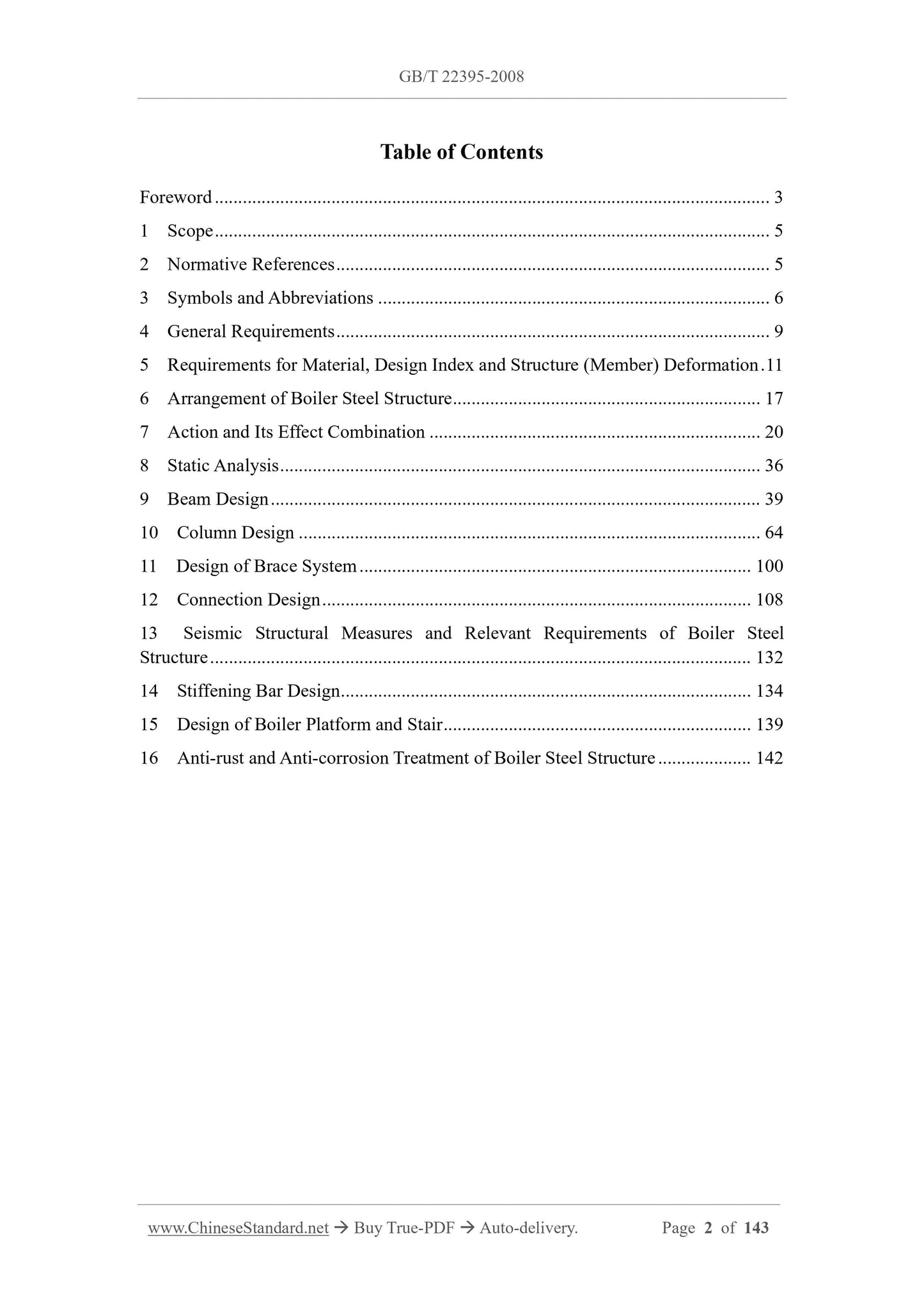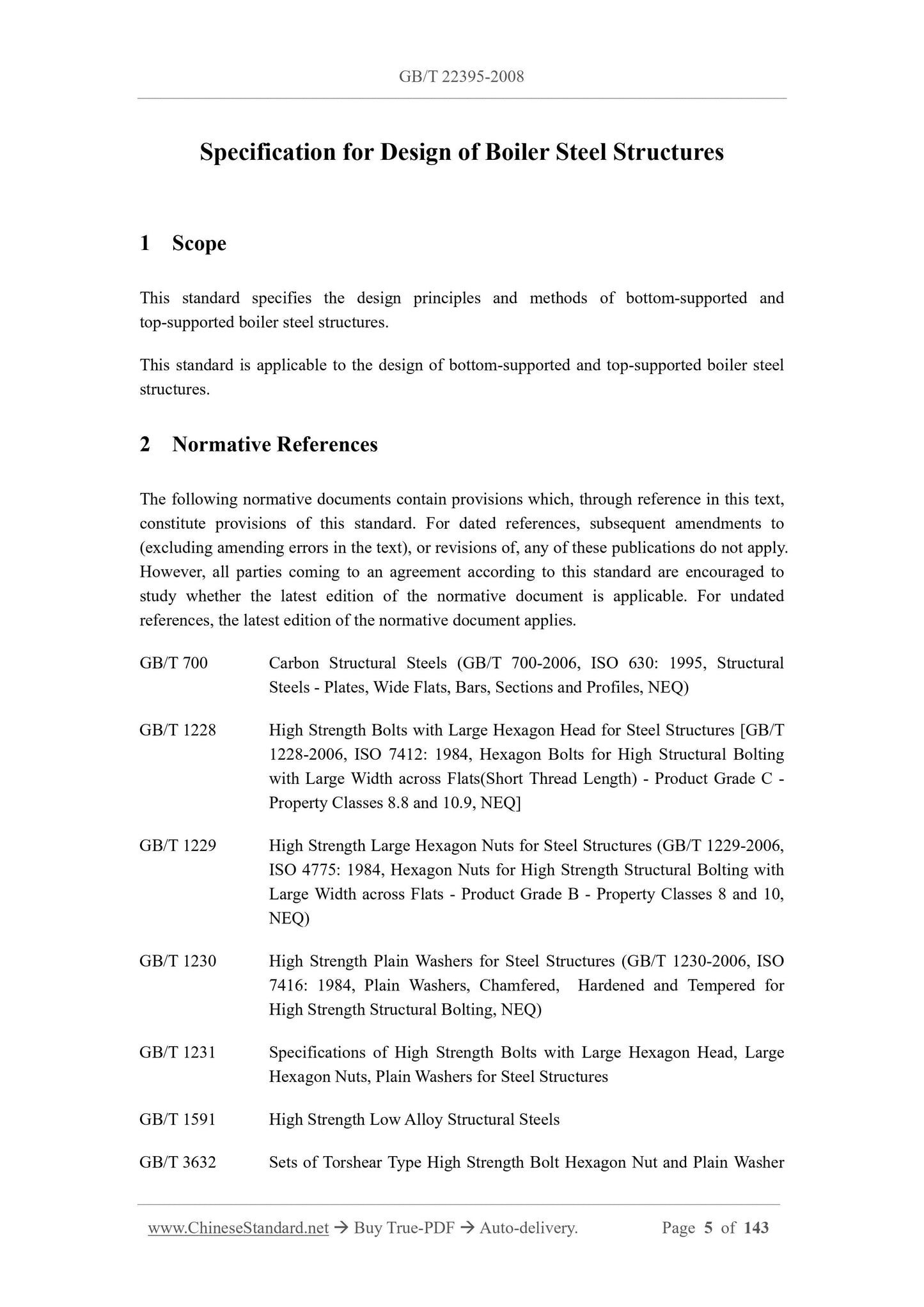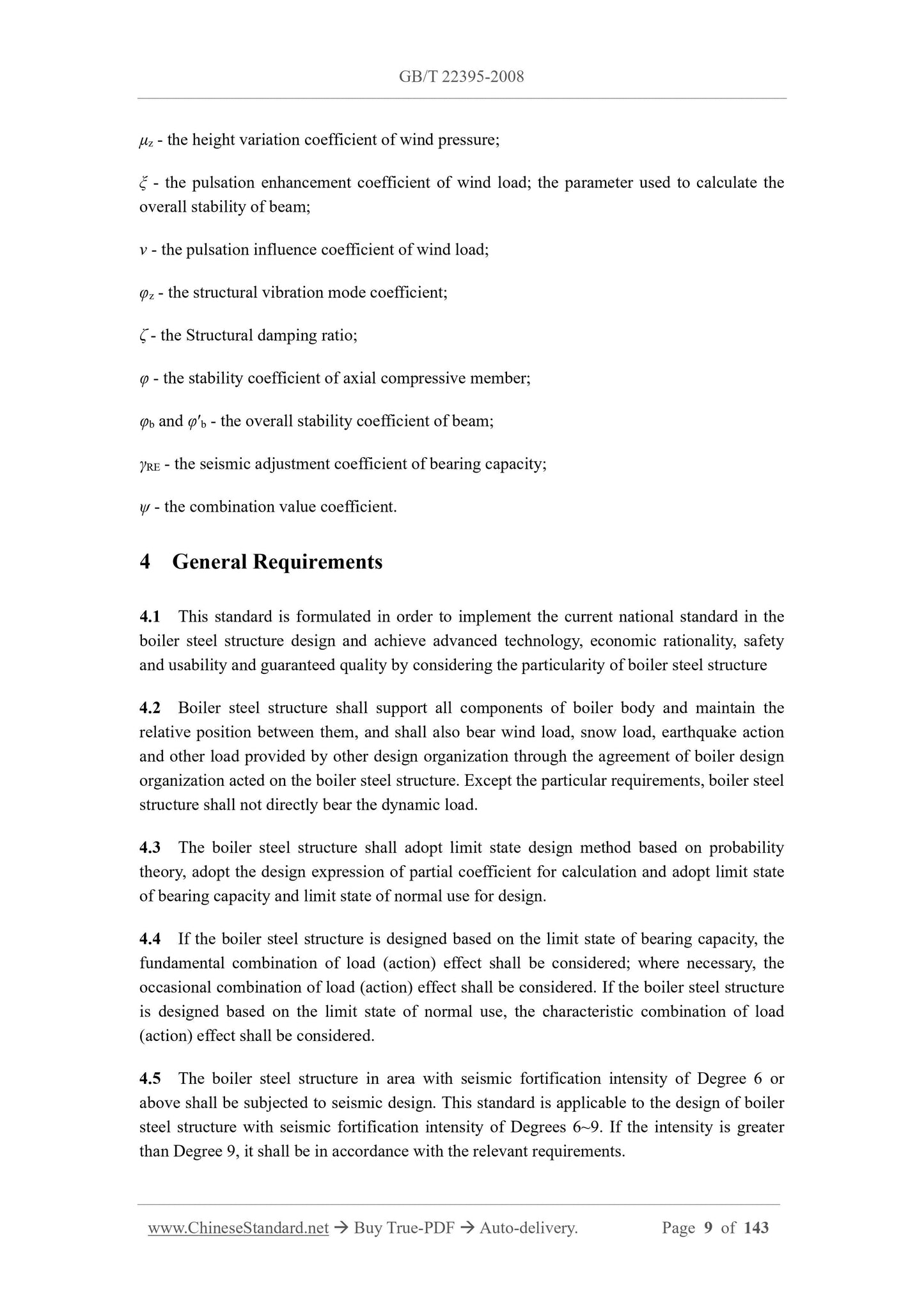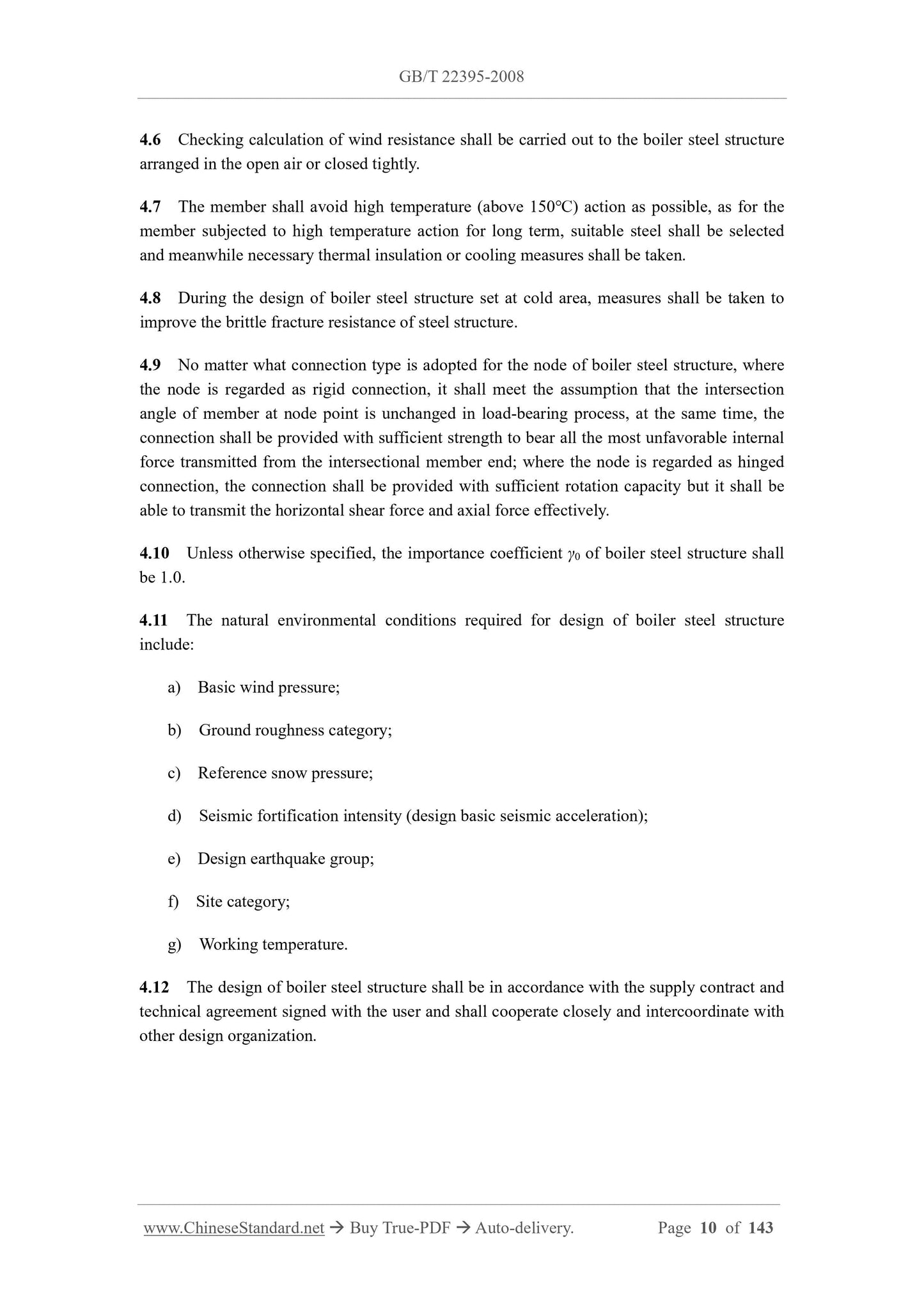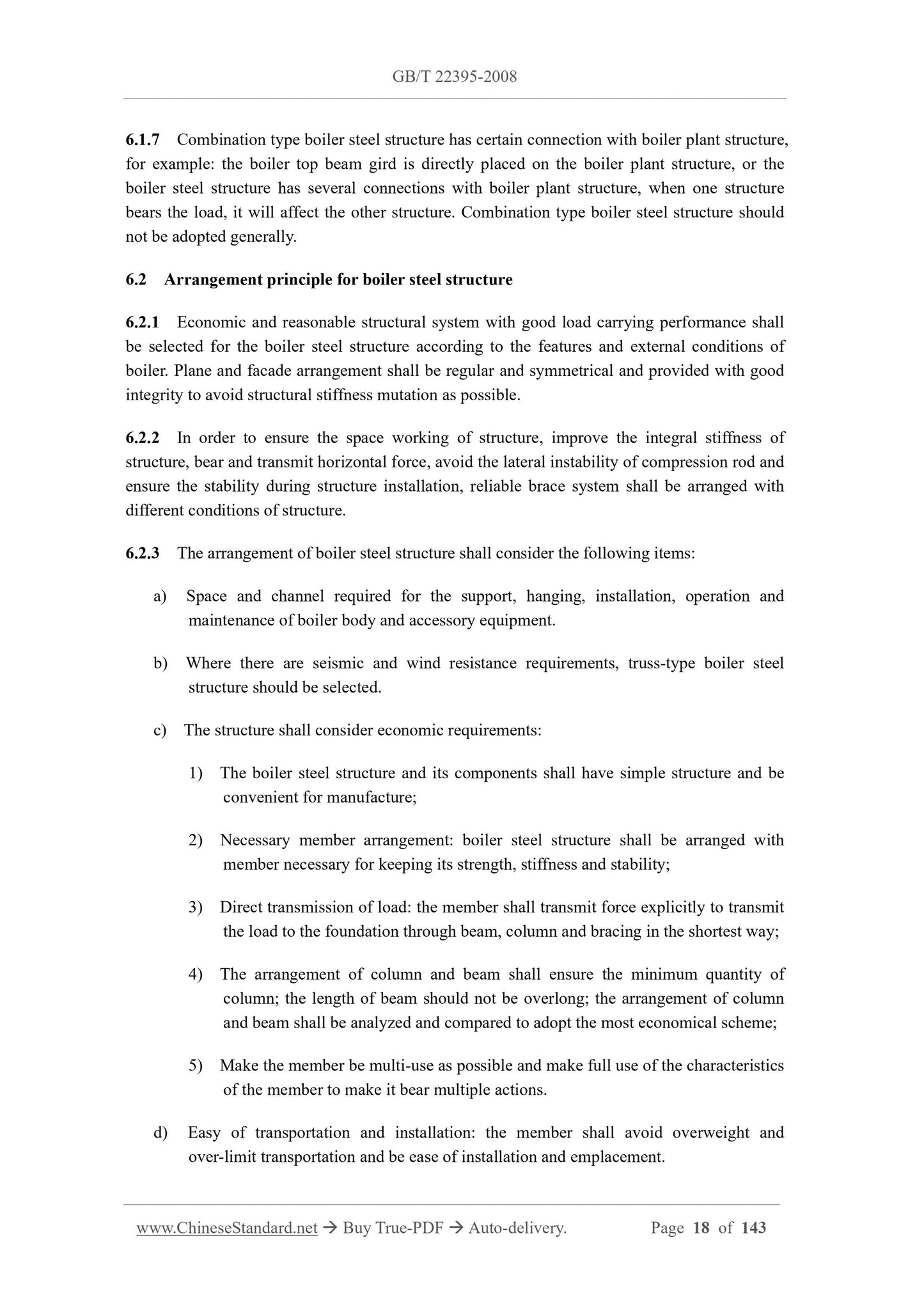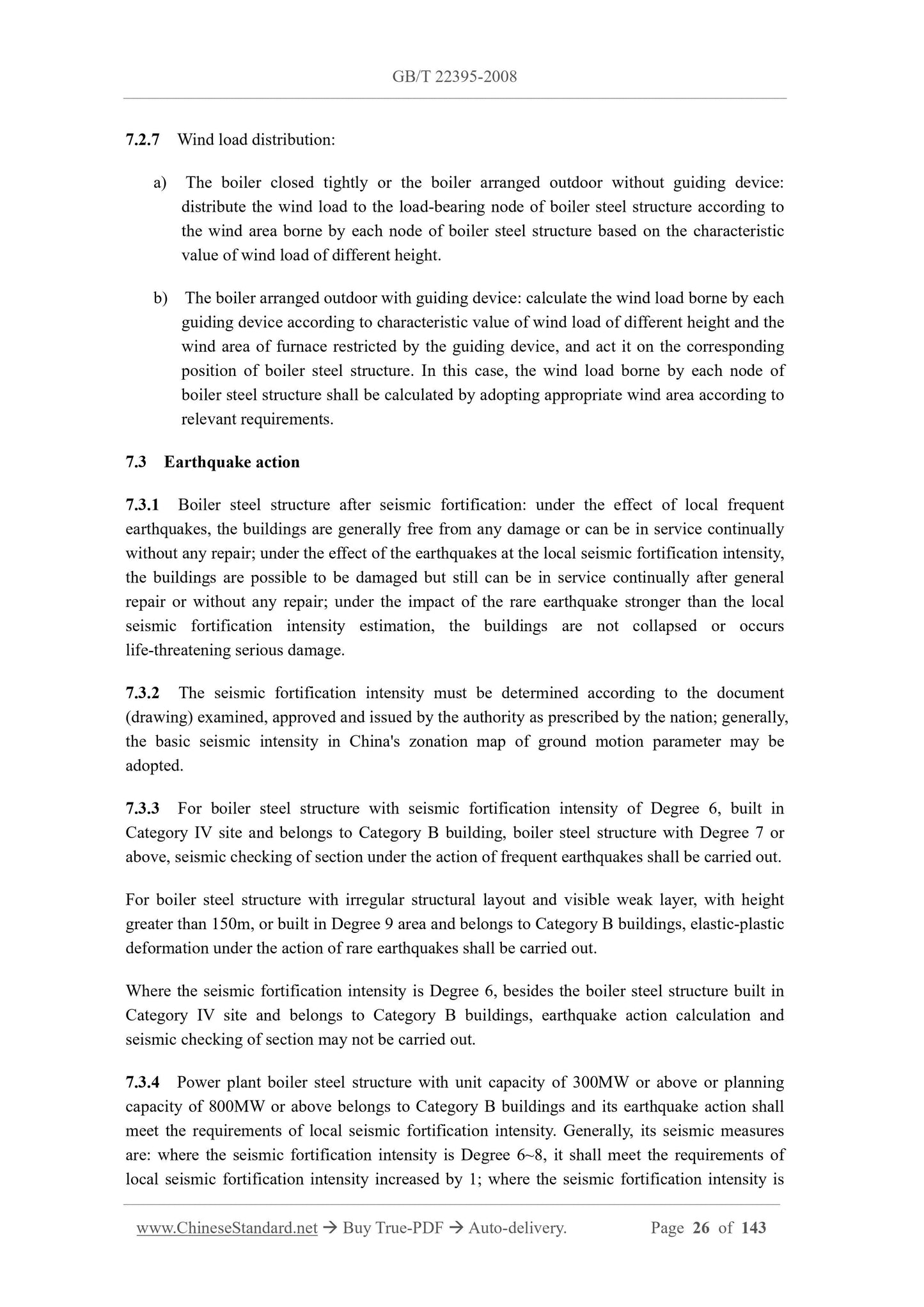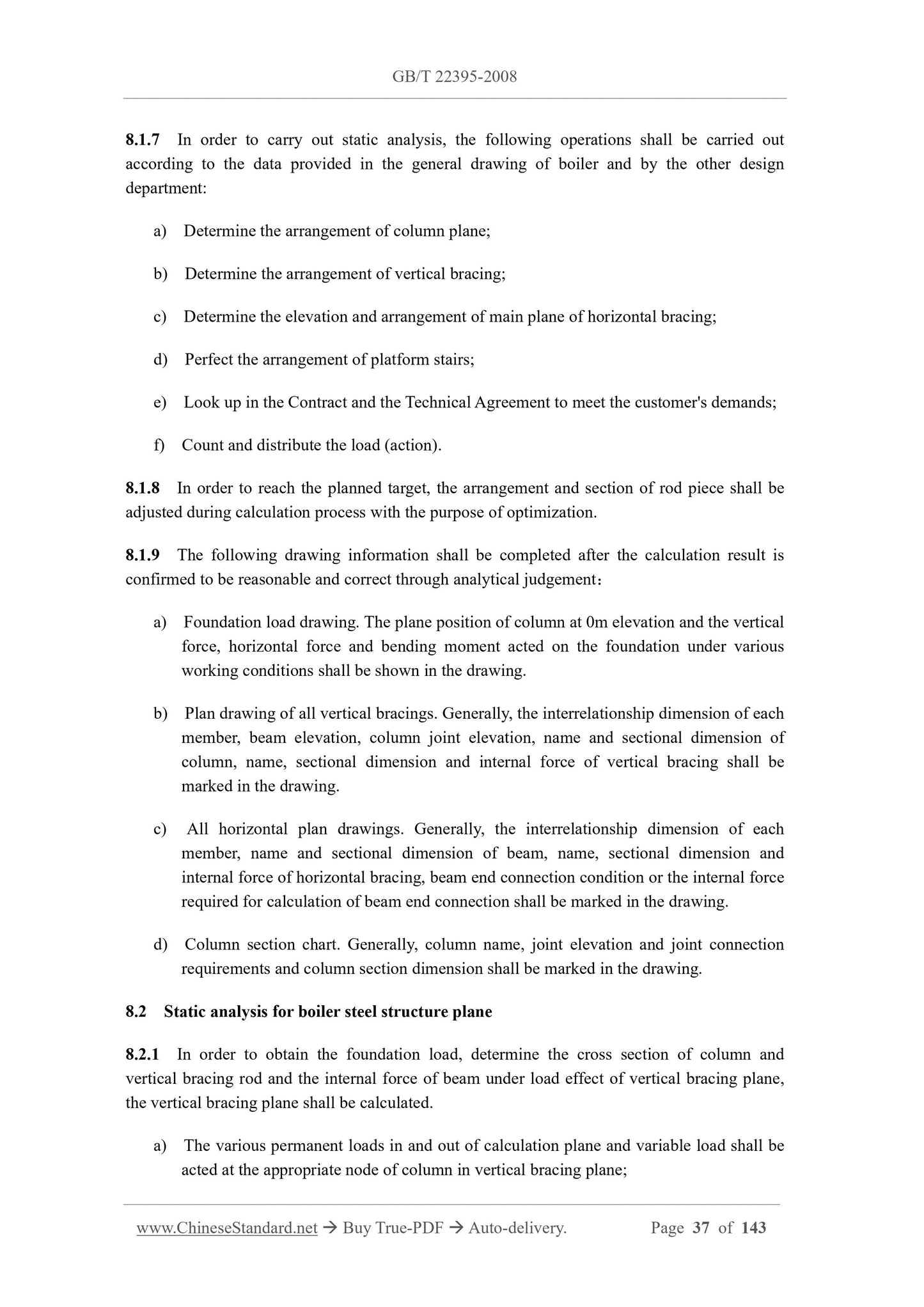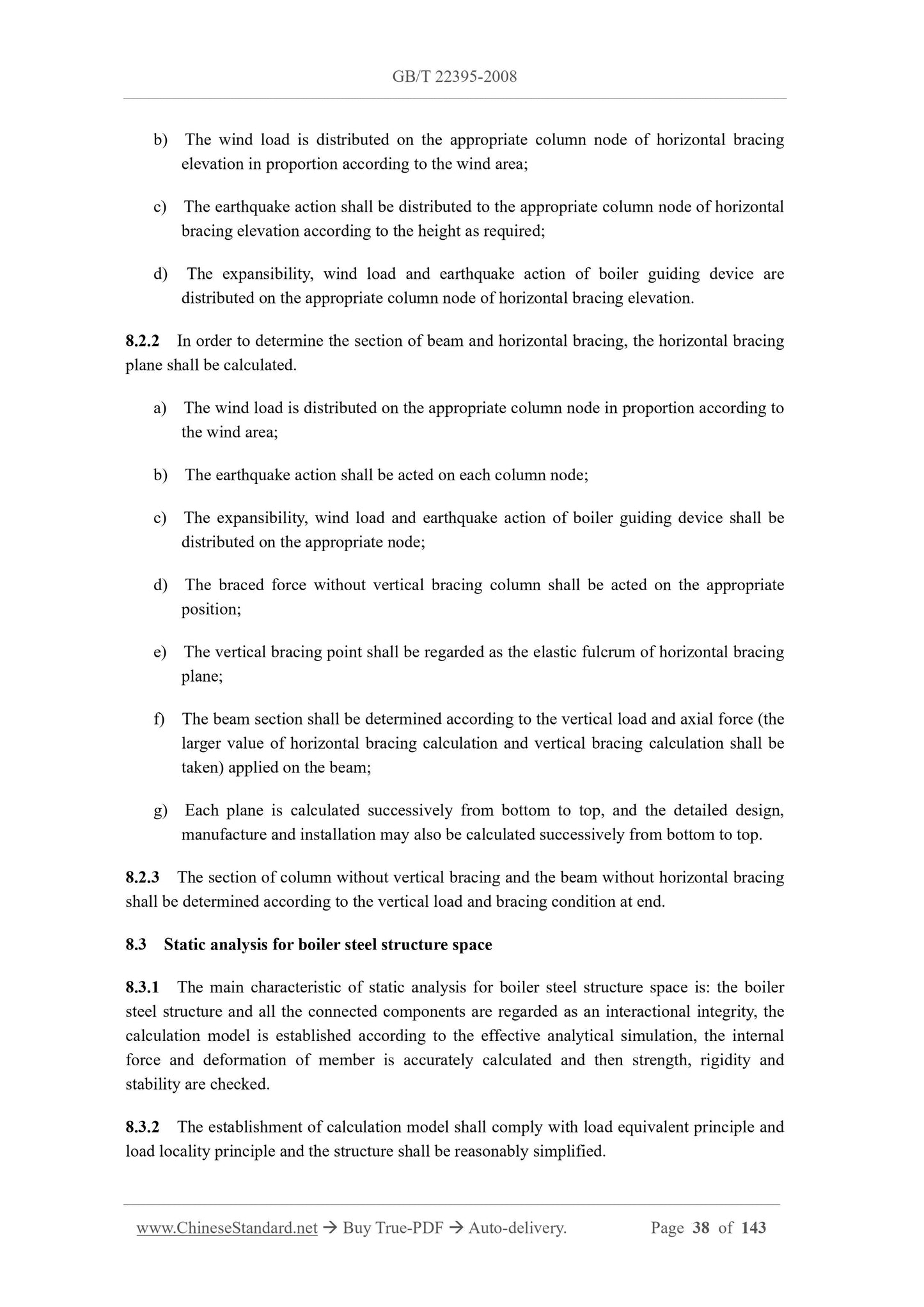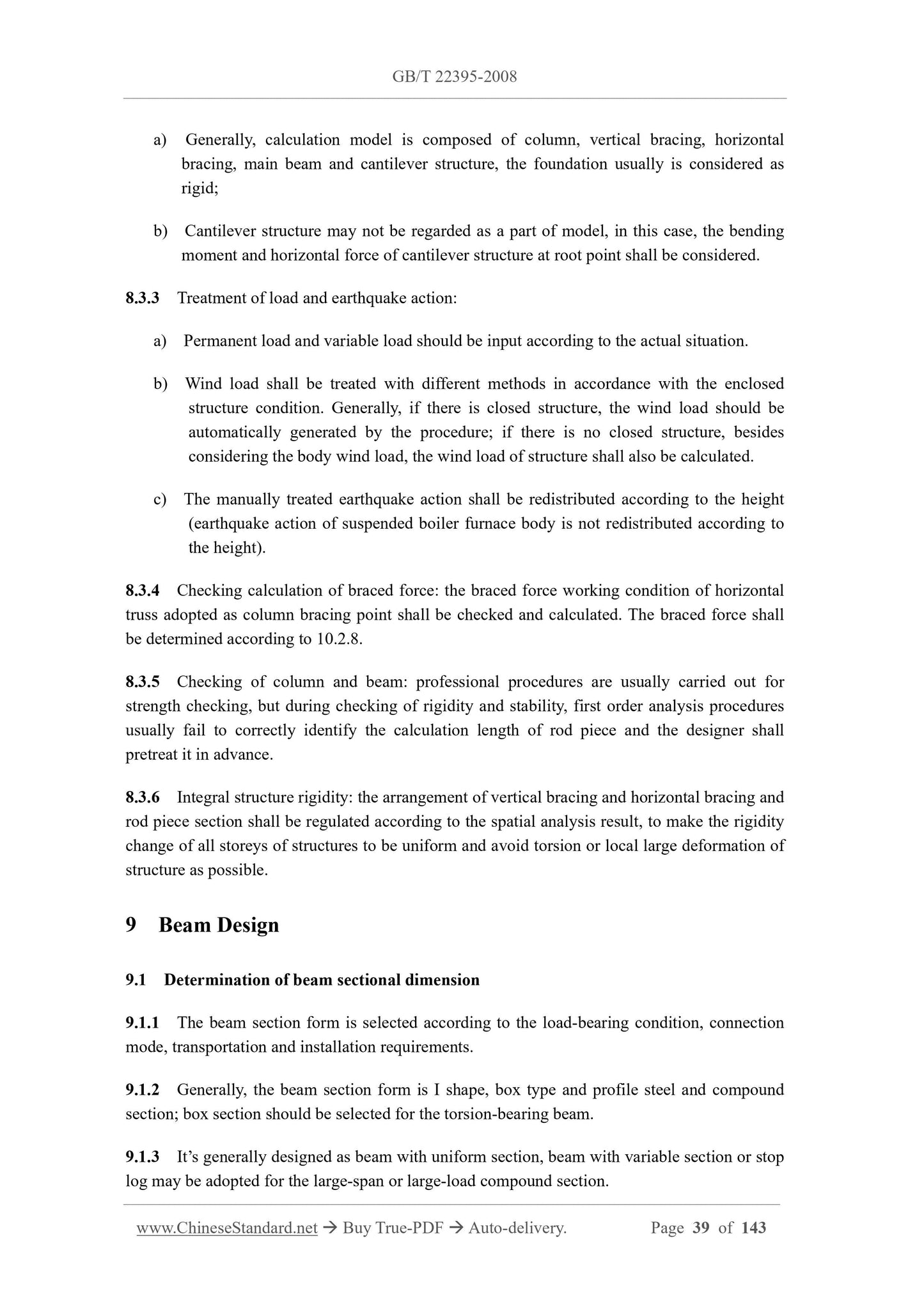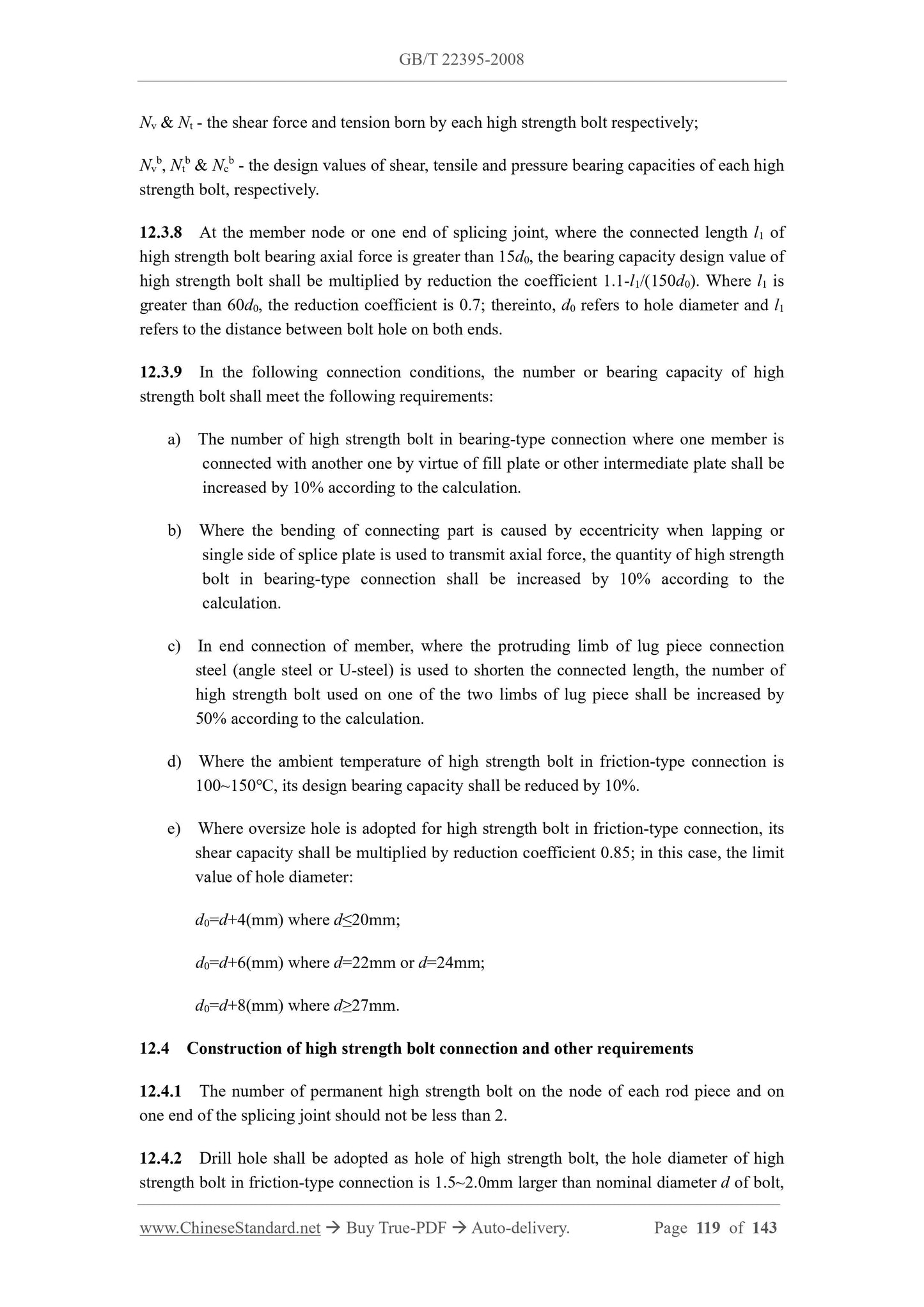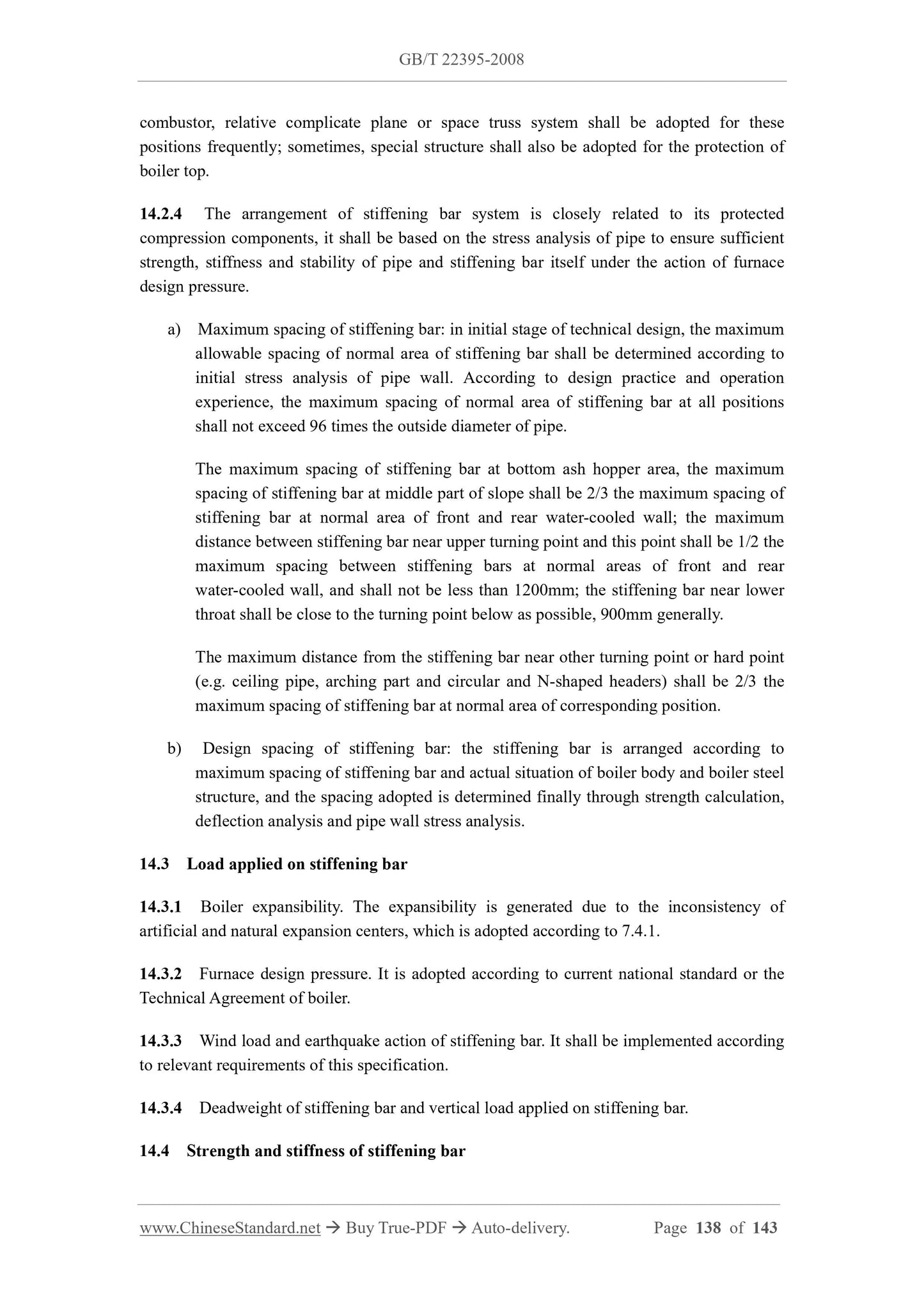1
/
of
12
PayPal, credit cards. Download editable-PDF and invoice in 1 second!
GB/T 22395-2008 English PDF (GB/T22395-2008)
GB/T 22395-2008 English PDF (GB/T22395-2008)
Regular price
$905.00
Regular price
Sale price
$905.00
Unit price
/
per
Shipping calculated at checkout.
Couldn't load pickup availability
GB/T 22395-2008: Specification for design of boiler steel structures
Delivery: 9 seconds. Download (and Email) true-PDF + Invoice.Get Quotation: Click GB/T 22395-2008 (Self-service in 1-minute)
Newer / historical versions: GB/T 22395-2008
Preview True-PDF
Scope
This standard specifies the design principles and methods of bottom-supported andtop-supported boiler steel structures.
This standard is applicable to the design of bottom-supported and top-supported boiler steel
structures.
Basic Data
| Standard ID | GB/T 22395-2008 (GB/T22395-2008) |
| Description (Translated English) | Specification for design of boiler steel structures |
| Sector / Industry | National Standard (Recommended) |
| Classification of Chinese Standard | J98 |
| Classification of International Standard | 27.060.30 |
| Word Count Estimation | 89,894 |
| Date of Issue | 2008-09-26 |
| Date of Implementation | 2009-03-01 |
| Quoted Standard | GB/T 700; GB/T 1228; GB/T 1229; GB/T 1230; GB/T 1231; GB/T 1591; GB/T 3632; GB/T 5117; GB/T 5118; GB/T 5313; GB 50009; GB 50011; GB 50017-2003; GB 50205 |
| Regulation (derived from) | National Standard Approval Announcement 2008 No.16 (Total No.129) |
| Issuing agency(ies) | General Administration of Quality Supervision, Inspection and Quarantine of the People's Republic of China, Standardization Administration of the People's Republic of China |
| Summary | This standard specifies the design principles and methods -supporting steel structure and suspension boilers. This standard applies to suspended boiler -supporting steel structure and design. |
Share

